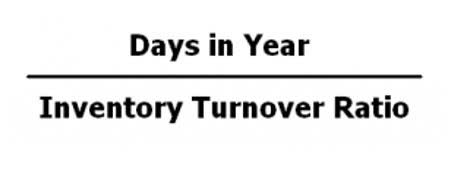Content

The accounting equation states that a company’s total assets are equal to the sum of its liabilities and its shareholders’ equity. Record each of the above transactions on your balance sheet.
Just like assets, any liabilities that you’ll need to pay off within a year are called current liabilities. Separating current liabilities from long-term liabilities like loans and other long-term debt allows business owners to more effectively plan for short-term obligations. Current liabilities assets = liabilities + equity are usually paid with current assets; i.e. the money in the company’s checking account. A company’s working capital is the difference between its current assets and current liabilities. Managing short-term debt and having adequate working capital is vital to a company’s long-term success.
Easy Way to Understand Accounting Terms
The accounting equation is only designed to provide the underlying structure for how the balance sheet is formulated. As long as an organization follows the accounting equation, it can report any type of transaction, even if it is fraudulent.

Let’s take a look at certain examples to understand the situation better. The accounting equation formula is based on the double-entry bookkeeping and accounting system. Debits and credits are equal when recording business transactions and preparing financial statements.
Calculating assets
This figure is crucial to understand a business’ economic condition. Now that you know what assets are and how much you owe, it’s time to understand how much is left. In the accounting world, you will come across these three terms pretty often. Let’s dive in and give you a clear understanding of why and how these terms affect the balance sheets. This doesn’t necessarily mean that the company owns those things, simply that they have them in their possession. A balance sheet is often shown in two columns, and you’ll find assets listed in order of liquidity in the left column.
Accounting equation is also called balance sheet equation and fundamental accounting equation. In this expanded accounting equation, CC, the Contributed Capital or paid-in capital, represents Share Capital. Retained Earnings is Beginning Retained Earnings + Revenue – Expenses – Dividends – Stock Repurchases. Accounting software is a double-entry accounting system automatically generating the trial balance. The trial balance includes columns with total debit and total credit transactions at the bottom of the report. A business’s balance sheet helps an owner discover what their company is worth and determine the financial strength of their business, according to the U.S.
What Category of Elements of Financial Statements Do Retained Earnings Belong In?
Assets are a company’s resources—things the company owns. Examples of assets include cash, accounts receivable, inventory, prepaid insurance, investments, land, buildings, equipment, and goodwill. From the accounting equation, we see that the amount of assets must equal the combined amount of liabilities plus owner’s (or stockholders’) equity. The accounting equation uses total assets, total liabilities, and total equity in the calculation.
What are 10 examples of liabilities?
- Accounts payable. Invoiced liabilities payable to suppliers.
- Accrued liabilities.
- Accrued wages.
- Customer deposits.
- Current portion of debt payable.
- Deferred revenue.
- Income taxes payable.
- Interest payable.
Financially healthy companies generally have a manageable amount of debt . If the debt level has been falling over time, that’s a good sign. If the business has more assets than liabilities – also a good sign. However, if liabilities are more than assets, you need to look more closely at the company’s ability to pay its debt obligations. This double-entry method of bookkeeping is designed in such a way that assets will always equal to liabilities plus owners’ equity.
Is Account Payable Assets, Liability, or Equity?
Thus, the accounting formula essentially shows that what the firm owns has been purchased with equity and/or liabilities. Companies compute the accounting equation from their balance sheet. They prove that the financial statements balance and the double-entry accounting system works. The company’s assets are equal to the sum of its liabilities and equity. Assets are what a business owns and liabilities are what a business owes. Both are listed on a company’s balance sheet, a financial statement that shows a company’s financial health.
Is a job an asset?
If you want to grow your income, you need to prioritize creating or acquiring assets. A company that runs without your physical presence or direct involvement is an asset. A business that cannot function without your time and attention is not an asset. In fact, most businesses are jobs in disguise.
The accounting equation ensures that the balance sheet remains balanced. That is, each entry made on the debit side has a corresponding entry on the credit side. Accounting is an essential part of running a business. But, that does not mean you have to be an accountant to understand the basics. Part of the basics is looking https://www.bookstime.com/ at how you pay for your assets—financed with debt or paid for with capital. The balance sheet is a very important financial statement for many reasons. It can be looked at on its own and in conjunction with other statements like the income statement and cash flow statement to get a full picture of a company’s health.
What are examples of assets, liabilities, equity?
The concept behind it is that everything the business has came from somewhere — either a third party, such as a lender, or an owner, such as a stockholder. Every dollar that a business holds is attributed to a third party or an owner.
This account includes the total amount of long-term debt . This account is derived from the debt schedule, which outlines all of the company’s outstanding debt, the interest expense, and the principal repayment for every period. This line item includes all of the company’s intangible fixed assets, which may or may not be identifiable. Identifiable intangible assets include patents, licenses, and secret formulas. Unidentifiable intangible assets include brand and goodwill. The most liquid of all assets, cash, appears on the first line of the balance sheet. Companies will generally disclose what equivalents it includes in the footnotes to the balance sheet.
The Accounting Equation
So, now you know how to use the accounting formula and what it does for your books. The accounting equation is important because it can give you a clear picture of your business’s financial situation. It is the standard for financial reporting, and it is the basis for double-entry accounting. Without the balance sheet equation, you cannot accurately read your balance sheet or understand your financial statements. Efficiency – By using the income statement in connection with the balance sheet, it’s possible to assess how efficiently a company uses its assets. For example, dividing revenue by the average total assets produces the Asset Turnover Ratio to indicate how efficiently the company turns assets into revenue.
- The term “equity” can be used in a number of different ways, from home value to investments.
- Double-entry accounting is the practice where one transaction affects both sides of the accounting equation.
- Still, liabilities aren’t necessarily bad as they can help finance growth.
- Company ZZK plans to buy office equipment that is $500 but only has $250 cash to use for the purchase.
- Your bookkeeping team imports bank statements, categorizes transactions, and prepares financial statements every month.
- In order to make sure that the accounts of a company are balanced, the total assets must equal the sum of the total of all liabilities and owner’s equity.
A few days later, you buy the standing desks, causing your cash account to go down by $10,000 and your equipment account to go up by $10,000. Now let’s say you spend $4,000 of your company’s cash on MacBooks.
